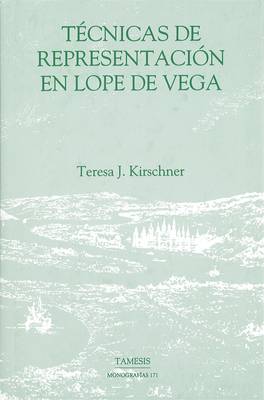
- Afhalen na 1 uur in een winkel met voorraad
- Gratis thuislevering in België vanaf € 30
- Ruim aanbod met 7 miljoen producten
- Afhalen na 1 uur in een winkel met voorraad
- Gratis thuislevering in België vanaf € 30
- Ruim aanbod met 7 miljoen producten
Zoeken
Omschrijving
Examination of staging techniques in Lope de Vega's comedies. This volume examines the staging techniques used by Lope de Vega in his comedies, especially those dealing with national historic/legendary materials, and with the Spanish-American landscape. Taking as a premise the difference between `telling' and `representing', Professor Kirschner bases her study on the performance aspects of the text, giving equal value to `extra-verbal' and `verbal' signs, such as those which describe the scenery and character's physique; other visual (decor, wardrobe, movement, gesture, lighting) and acoustic (music, voices, songs) elements are also analysed. The first part of the book deals with specific dramatic strategies used by Lope in his representationof dreams, sexuality, and the collective character; the author then moves on to consider the implications of staging within the structure of the plays. The final section is centred on Lope's dramaturgy of the New World, specifically the discourse in favour of the Conquest, and its opposite, the discourse in favour of the `Indian'. TERESA J. KIRSCHNER teaches in the Department of Spanish Studies at Simon Fraser University.
Specificaties
Betrokkenen
- Auteur(s):
- Uitgeverij:
Inhoud
- Aantal bladzijden:
- 160
- Taal:
- Engels
- Reeks:
- Reeksnummer:
- nr. 171
Eigenschappen
- Productcode (EAN):
- 9781855660526
- Verschijningsdatum:
- 25/06/1998
- Uitvoering:
- Hardcover
- Formaat:
- Genaaid
- Afmetingen:
- 155 mm x 236 mm
- Gewicht:
- 521 g

Alleen bij Standaard Boekhandel
+ 195 punten op je klantenkaart van Standaard Boekhandel
Beoordelingen
We publiceren alleen reviews die voldoen aan de voorwaarden voor reviews. Bekijk onze voorwaarden voor reviews.











